Plants growing indoors suffer from dry air, and if you want to know How to Increase Humidity for Houseplants, read this till the end.
Do you find your indoor plant’s foliage turning yellow, looking dead, drying, and falling down? This might indicate that they need moisture in the air. Learn How to Increase Humidity for Houseplants with these simple methods.
How to Increase Humidity for Houseplants
1. Misting
Humidity is nothing but water vapor that is present in the air for a long time. Misting has a somewhat similar effect but for a very short duration. The particles are not as tiny as water vapor in the air, so they settle down quickly.
It is important to note that misting the houseplants is just a temporary way to increase the humidity around them.
Fill water in a spray bottle and mist the plants. It is an inexpensive and effortless solution.
Caution
- Plants with fuzzy leaves should not be misted.
- Ugly streaks will appear on the walls if someone smokes in the house.
- Some houseplants tend to attach themselves to walls for growth if they are placed near the walls while misting.
- Mist the plants in the morning so they can dry out before the cool evening.
2. Pebble Trays
As it might be clear from the name, pebble trays are nothing but trays filled with pebbles and water. The pebbles should form a thick one or two-inch layer. Now, place the houseplant on this tray.
Caution
- You can only do so if the width of the tray is greater than that of the pot.
- The tray should not be made of terracotta or any porous material, which promotes water leakage.
- Also, the bottom of the pot shouldn’t sit directly in the water as it can cause root rot. The level of pebbles should be higher than water.
3. Use a Glass Bowl or Cloche
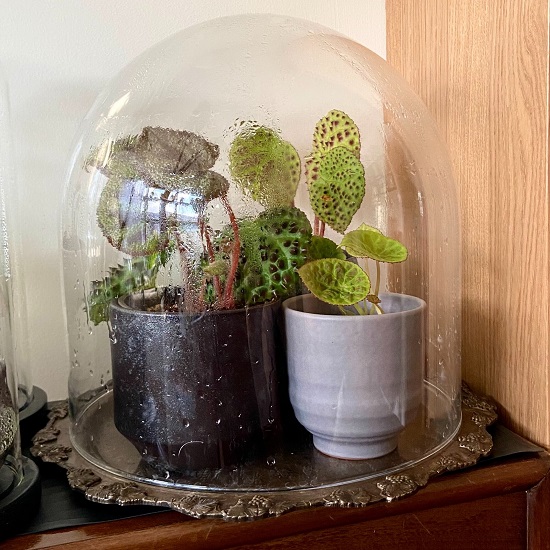
It is an effective way to maintain moisture for small houseplants. Note that the depth of the bowl or glass should be more than the height of the plant.
You must have seen plants grown in glass globes; it also creates a contained environment to increase humidity. You can use a garden cloche for this purpose!
Caution
- We suggest you choose transparent clear glass for planting, as you’ll be able to judge whether the soil is dry or moist just by looking at it.
4. Terrarium
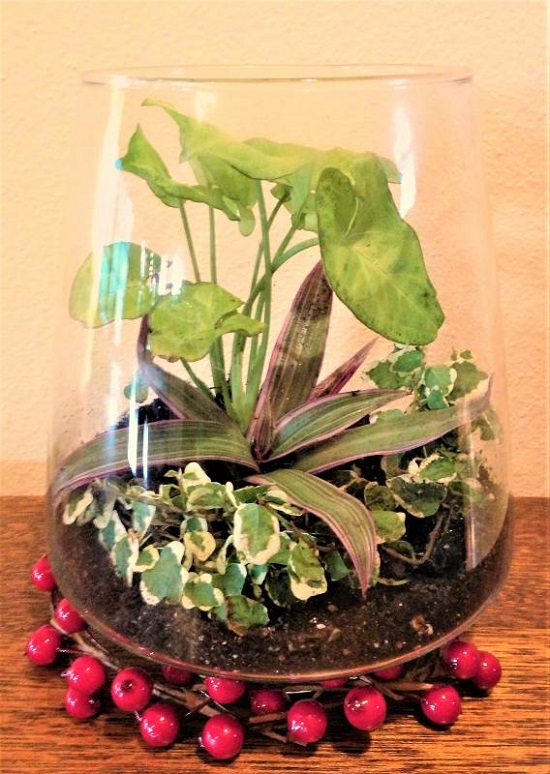
It works similarly as the concept mentioned above. Plant leaves cause evapotranspiration, which raises the humidity levels in a contained environment.
Terrariums are closed or semi-open glass structures; you can also use aquariums as terrariums. Place the pots in the aquarium or plant the houseplants directly in the aquarium. It’s up to you!
If not in the terrarium, you can also group your plants together in the room to increase the humidity level. Plants growing closely create a humid microclimate, so it’s a clever idea to group them together.
Caution
- Air plants and succulents are not a good option to grow in a closed terrarium as they have constant air circulation; plant them in an open terrarium.
- Check out our terrarium guide here to learn more.
5. Humidifier
This device is used to raise the humidity levels in a room or a building. A point-of-use humidifier can sufficiently increase the humidity of houseplants.
Humidifiers are not very expensive and are the best and most guaranteed way to increase humidity.
Caution
- Mold, salt, and fungus can build up because of the high humidity in humidifiers. Hence, you must clean the humidifier once or twice a month.
- Soak the parts of a humidifier in a solution of water and vinegar to clean the parts of the humidifier.
- If you observe molds and fungus on the foliage of your houseplants, clean the foliage gently with a moist cloth.
6. Pot in a Pot
Select one or two sizes of bigger pots than the pot of the houseplant. Fill the pot with water and place the houseplant in this larger pot.
Keep in mind that the larger pot should be waterproof to prevent leakage. You can also place sphagnum moss in the gap. As the water evaporates or the sphagnum moss dries out. Thus, the humidity level rises.
Caution
- This method will be most successful for plants that love moisture and humidity and if you’re growing them in a dry and warm climate.
7. Best Location
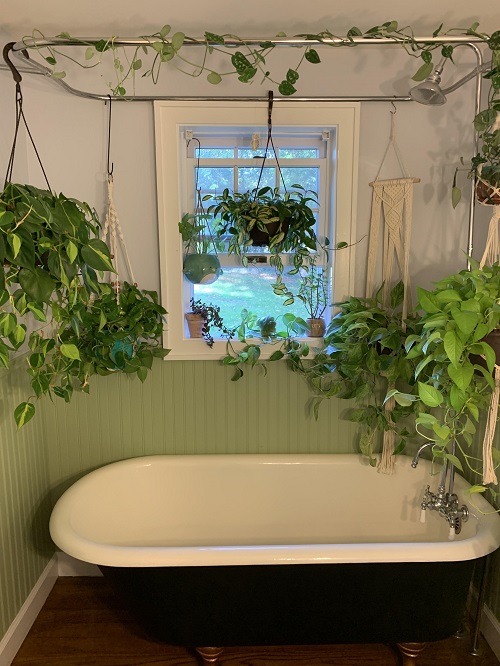
A great way to ensure that plants receive proper humidity is by placing them in a suitable location. Place the houseplant in a place where the moisture content remains high.
Windows in the bathroom or near the kitchen sink are perfect spots for houseplants. The evaporated water from your steamy showers, cooking, and other things keep the humidity-loving plants healthy and growing.
Caution
- Ensure adequate light for your houseplants when you place them in these spots.
8. Steam from Warm Water
Place any heatproof utensils filled with water near them. The heat they produce will cause evaporation and ultimately increase humidity due to the steam in the air.
Caution
- Avoid touching the utensil with bare hands when you refill, as it might be too hot to touch,
9. Keep a Water Vessel Near a Plant
One of the easiest yet underrated hacks to boost moisture in the air is by keeping a wide container or a water vessel around the plant. As the water evaporates from the vessels, it will compensate for the plant’s humidity needs.
Caution
- Change the water in a timely manner to avoid breeding unwanted pests.
- Make sure not to spill the vessel while taking care of the plant.
10. Cover Seedlings with a Plastic Film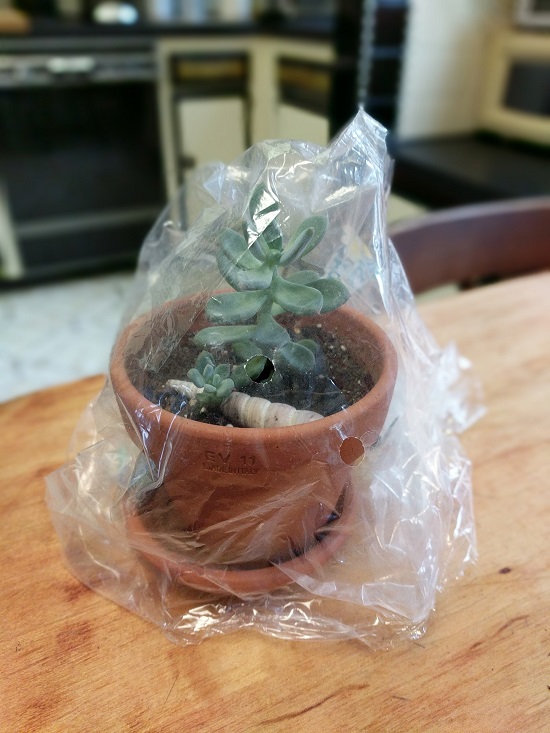
Create a mini greenhouse for seedlings by covering the container with a thin plastic film. This will trap the moisture released by the plants and give it back to them.
You can use a freezer bag, cling wrap, or any regular plastic sheet for this purpose.
Caution
- Do not expose the pot to direct sunlight or complete shade while doing so. Ensure it gets at least 3-4 hours of filtered sunlight daily.


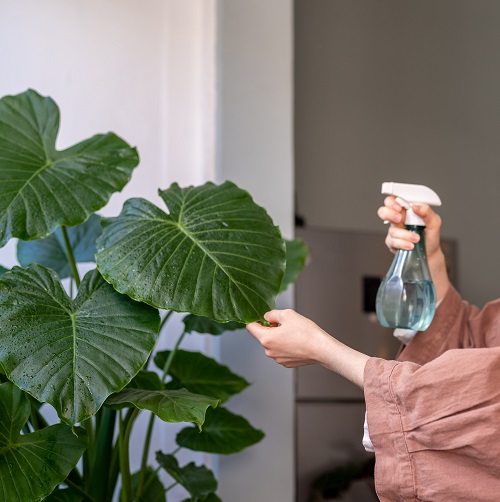
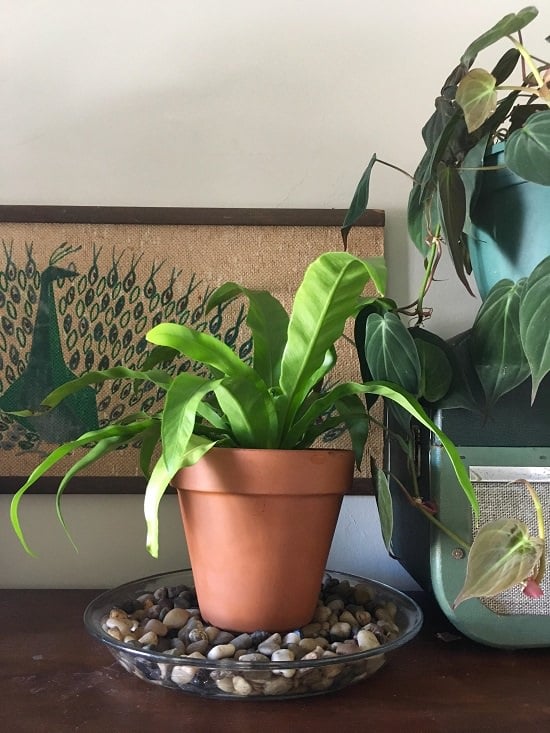

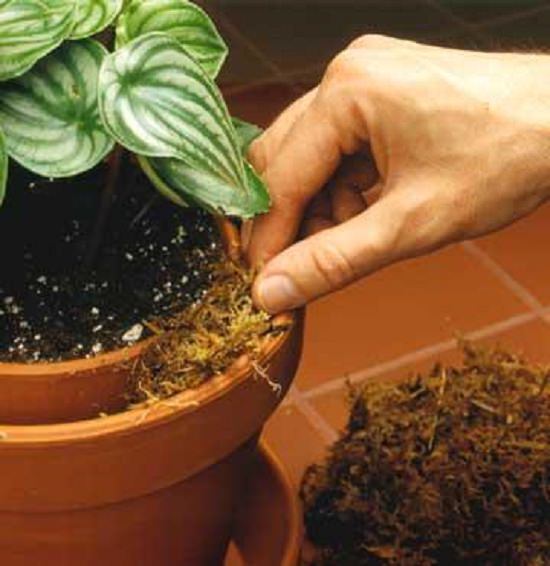



Could you put dracenia in a glass bowl. Is the bowl completely over the plant?
I placed a plant pot on a tray with pebbles and a little water but the roots at the bottom of the pot rotted and my poinsettia is now shedding leaves